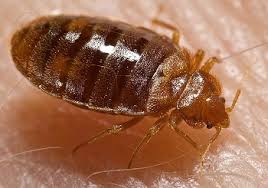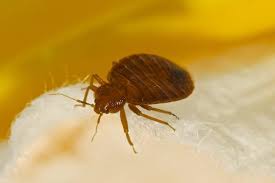Mites, scientifically known as Acari, are tiny arthropods that belong to the class Arachnida. These minuscule creatures play a significant role in various ecosystems, often overlooked due to their size. Mites come in diverse species, inhabiting a wide range of environments, from soil and water to plants and animals.
These diminutive arachnids are characterized by their small size, usually measuring less than one millimeter in length. Despite their microscopic stature, mites wield immense ecological importance. Some species serve as decomposers, aiding in the breakdown of organic matter in the soil. Others establish symbiotic relationships with plants, insects, or animals.
In agriculture, certain mites contribute positively by preying on harmful pests, serving as natural pest control agents. However, some mites can also be detrimental as they feed on plants, causing damage to crops. Striking a balance in understanding and managing mite populations becomes crucial for maintaining ecosystem health and agricultural productivity.
One notable group within the mite family is the dust mites, which commonly inhabit household environments. Although these mites are harmless to most individuals, they can trigger allergies in some people when their microscopic fecal pellets and body fragments become airborne.
Mites undergo various life stages, including egg, larva, nymph, and adult. Their life cycles vary among species, with some completing their development in a matter of days, while others may take weeks or even months. This adaptability contributes to the mites’ ability to thrive in diverse conditions.
In scientific research, mites serve as model organisms for studying various biological processes. Their simple yet fascinating biology provides valuable insights into broader aspects of arachnid behavior, ecology, and evolution.
Despite their small size, mites have a significant impact on the natural world and human environments. Understanding their roles, both beneficial and harmful, allows us to appreciate the intricate balance of ecosystems and encourages the development of sustainable practices in agriculture and pest control.
Read Also: Black Cat Breeds Description and Complete Care Guide
Plants Affected by Mites (Acari)

Mites can impact a wide array of plants, causing both direct and indirect effects on their health. These tiny arachnids feed on plant tissues, disrupting cellular structures and potentially leading to visible damage. Here’s a brief overview of the types of plants commonly affected by mites:
1. Ornamental Plants: Mites often target ornamental plants in gardens and landscapes. Roses, azaleas, and ornamental shrubs are susceptible to infestations, which can result in leaf discoloration, stippling, and distortion.
2. Fruit Crops: Fruit-bearing plants such as apple trees, citrus trees, and strawberries can fall prey to mite infestations. These pests may cause stippling on leaves, reducing the plant’s ability to photosynthesize and affecting fruit quality.
3. Vegetables: Mites can damage various vegetable crops, including tomatoes, cucumbers, and beans. Infestations may lead to leaf curling, bronzing, and reduced yields.
4. Field Crops: Important field crops like soybeans, corn, and cotton can be affected by different mite species. Mites may cause damage by feeding on plant sap, impacting growth and potentially reducing overall crop yield.
5. Orchard Trees: Trees in orchards, such as peach and almond trees, are susceptible to mite infestations. The damage can extend beyond leaves to affect overall tree health and fruit production.
6. Houseplants: Indoor plants are not exempt from mite infestations. Spider mites, for example, can thrive in the relatively dry conditions of indoor environments, affecting common houseplants like spider plants and peace lilies.
7. Herbs: Even herbs like basil and mint are not immune to mite damage. Infestations can lead to a decline in herb quality and vitality.
Mites feed on plant sap by piercing individual plant cells with their specialized mouthparts.
This feeding behavior not only damages the plant directly but also makes it susceptible to secondary issues like fungal infections. The impact of mites on plants emphasizes the importance of integrated pest management strategies to mitigate their effects while minimizing harm to the environment.
Damages Caused by Mites
Mites can inflict various damages on plants, animals, and even humans. Their small size belies the significant impact they can have. Here are some of the damages caused by mites:
1. Leaf Damage: Mites often feed on plant tissues, causing visible damage to leaves. This damage may manifest as stippling, discoloration, bronzing, or necrotic spots, affecting the overall health and aesthetics of plants.
2. Reduced Photosynthesis: Mites pierce plant cells to feed on sap, disrupting the process of photosynthesis. This interference can lead to a decrease in the plant’s ability to produce energy, resulting in stunted growth and reduced yield in crops.
3. Leaf Curling and Distortion: Some mite species induce the curling or distortion of leaves as they feed. This can hinder the normal development of the plant and impact its ability to carry out essential physiological functions.
4. Fruit and Flower Damage: Mites can target reproductive structures, causing damage to fruits and flowers. This may lead to deformities, reduced fruit quality, and even a decline in the overall reproductive success of the plant.
5. Transmission of Plant Diseases: Certain mite species act as vectors for plant diseases. They can transmit viruses and other pathogens from one plant to another, exacerbating the damage caused by both the mites themselves and the associated diseases.
6. Allergic Reactions in Humans: Dust mites, a type of mite commonly found in household environments, can trigger allergic reactions in some individuals. These reactions may include sneezing, itching, and respiratory issues, particularly in those with sensitivities.
7. Losses in Agricultural Yields: Mite infestations in agricultural settings can result in significant economic losses. Reduced crop yields, lower quality produce, and the cost of pest control measures contribute to financial setbacks for farmers.
8. Skin Irritations in Animals: Animals, including livestock and pets, can experience skin irritations and discomfort due to mite infestations. Mites may burrow into the skin, causing itching, hair loss, and other dermatological issues.
Understanding the damages caused by mites is crucial for implementing effective pest control strategies. Integrated pest management, which combines biological, cultural, and chemical control methods, is often recommended to mitigate mite infestations while minimizing environmental impact.
Read Also: Cornish Rex Cat Breed Description and Complete Care Guide
Control and Preventive Measures

Controlling and preventing mite infestations involves a combination of strategies aimed at disrupting their life cycle and minimizing conducive conditions. Here are some effective control and preventive measures:
1. Cultural Practices:
Crop Rotation: Rotate crops to disrupt the life cycle of mites that may be specific to certain plant species.
Weed Management: Keep the area around plants weed-free, as weeds can harbor mites and serve as alternative hosts.
2. Biological Control:
Predatory Mites: Introduce natural enemies, such as predatory mites, which feed on harmful mite species. This biological control method helps maintain a balance in the ecosystem.
Beneficial Insects: Encourage the presence of beneficial insects like ladybugs and predatory beetles, which feed on mites.
3. Maintaining Moisture Levels:
Regular Watering: Maintain adequate soil moisture to create an environment less favorable for certain mite species. This can help prevent drought-stressed plants, which are more susceptible to infestations.
4. Pruning and Sanitation:
Pruning Infested Plant Parts: Remove and dispose of heavily infested plant parts to reduce mite populations.
Clean Gardening Tools: Regularly clean and disinfect gardening tools to prevent the spread of mites between plants.
5. Chemical Control:
Insecticidal Soaps and Oils: Use insecticidal soaps or neem oil, which are effective against mites while being less harmful to beneficial insects.
Miticides: Apply miticides selectively, following recommended guidelines. However, overreliance on chemical solutions may lead to resistance and environmental harm.
6. Protective Barriers:
Row Covers: Use physical barriers like row covers to protect plants from mite infestations, especially in agriculture or larger-scale cultivation.
7. Monitoring:
Regular Inspections: Monitor plants regularly for signs of mite infestation, such as stippling, discoloration, or distorted growth. Early detection allows for more effective intervention.
8. Dust Control:
Reduce Indoor Dust: Minimize dust in indoor environments to control dust mites. Regular cleaning, vacuuming, and using dust-proof mattress and pillow covers can help.
9. Maintaining Humidity:
Humidity Control: For dust mite prevention indoors, maintain relative humidity below 50%, as dust mites thrive in humid conditions.
10. Resistant Plant Varieties:
Plant Resistant Varieties: Choose plant varieties that are less susceptible to mite infestations, as some species show resistance to specific pests.
Implementing an integrated approach that combines multiple control methods is often the most effective way to manage mite populations while minimizing negative impacts on the environment. Regular monitoring and timely intervention are key components of successful mite control and prevention strategies.
Frequently Asked Questions (FAQs) About Mites (Acari)
Q1: What are mites?
A1: Mites are tiny arthropods belonging to the class Arachnida. They are closely related to spiders and ticks, known for their small size and diverse habitats.
Q2: Where do mites live?
A2: Mites inhabit various environments, including soil, water, plants, and animals. Some species thrive in household dust, while others are found in agricultural fields and natural ecosystems.
Q3: What do mites eat?
A3: Mites have diverse diets. Plant-feeding mites pierce plant cells to feed on sap, while predatory mites consume other small arthropods. Some mites are scavengers, feeding on organic matter.
Q4: Can mites harm humans?
A4: While most mites are harmless to humans, some, like dust mites, can trigger allergies. Certain mites can also cause skin irritations in animals and humans.
Q5: How do I know if my plants have a mite infestation?
A5: Look for signs such as stippling, discoloration, distortion, or webbing on plant surfaces. Regularly inspect the underside of leaves where mites often feed.
Q6: What is integrated pest management (IPM) for mites?
A6: IPM is a holistic approach that combines various strategies, including biological control, cultural practices, and targeted pesticide use, to manage mite populations while minimizing environmental impact.
Q7: How can I control mites in my garden?
A7: Control measures include cultural practices (crop rotation, weed management), biological control (introducing predatory mites), and judicious use of insecticidal soaps or oils.
Q8: Are all mites harmful to plants?
A8: No, some mites play beneficial roles by preying on harmful pests. However, certain species can cause damage to plants by feeding on their tissues.
Q9: Can mites be controlled without using chemicals?
A9: Yes, non-chemical control methods include biological control, cultural practices, and maintaining optimal plant health. Chemical control, if necessary, should be used judiciously.
Q10: Can mites infest indoor environments?
A10: Yes, dust mites are common indoor pests. Regular cleaning, maintaining low humidity, and using dust-proof covers can help control indoor mite populations.
